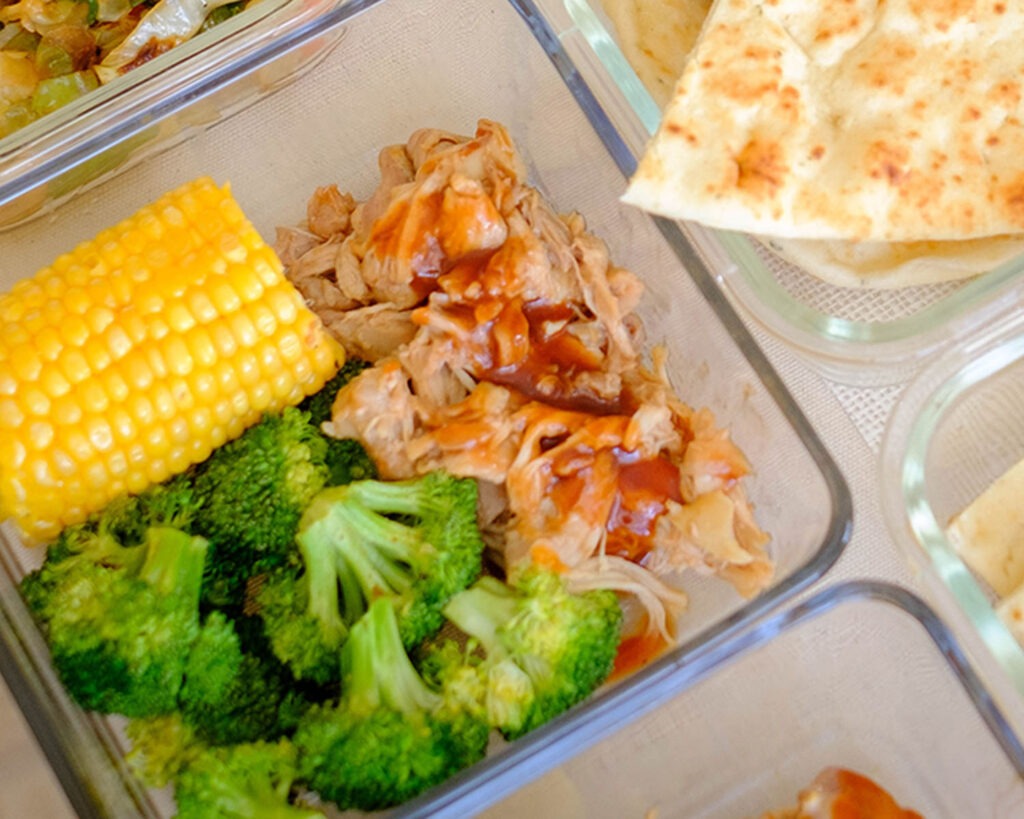Choosing nutritious ingredients is important when preparing meals because it can help you achieve a balanced diet and ensure that your body is getting the nutrients it needs. Learning about the nutrition of food items is essential for making informed choices that support a healthy diet, manage health conditions, prevent chronic diseases, and manage weight. Learn about the ingredients, their benefits, and ways you can incorporate them into your weekly meal prep.

Snack for Success: Healthy Eating Tips for Office Munchies
Meal prepping healthy snacks comes with a multitude of nutritional benefits, especially when it comes to fighting off those midday munchies. Incorporating meal prepping into your snack routine is a powerful strategy to stay on the healthy track, save time, and ensure you have nourishing options available whenever hunger strikes. It’s a small investment of…

Meal Prepping for Success: Plan Healthy Lunches for Busy Workdays
Let’s talk about how to plan and meal prep delicious and hassle-free healthy lunches that will keep you fueled and focused throughout your workweek. Meal prepping for a healthy workweek doesn’t have to be daunting. With a bit of planning, creativity, and a sprinkle of enthusiasm, you can transform your lunch routine into a delightful…

Sip Smartly: Stay Hydrated, Stay Alert
It’s time to give your productivity a hydration boost! Staying hydrated isn’t just a health tip – it’s such a key advantage to staying alert, engaged, and on top of your game at the workplace. We are going to help boost your workplace productivity with our top refreshing tips. Let us share the incredible benefits…

Mindful Mornings: Energize Your Day with a Healthy Breakfast Routine
For those of you who are eager to seize the day and make the most of your work hours, then you should know that breakfast can be the most impactful meal of the day. But have you ever truly grasped the immense impact it can have on your work performance? Having a nutritious breakfast becomes…

Benefits of Beets
Beets are common root vegetables and are recognizable for their deep dark red color. From juice to hummus and even dessert, they are showing up everywhere, adding color, antioxidants, and flavor. They are often in salads, but the entire plant is edible and can be boiled, baked, and even steamed. Beets belong to the chenopod…

Benefits of Celery
Celery is a well known, strong tasting vegetable that is low calorie and mostly made of water. Celery is part of the carrot and parsnips family, plants that have flowers. This includes parsley, caraway, and dill. Celery has long, green, fibrous stalks bunched together at the root with leaves at the top. We often find…

Benefits of Pineapple
Pineapple is more than just a delicious juicy tropical fruit. It shines in a lot of health benefits and is easy to incorporate into meals. This fruit is actually composed of many individual fruits that come together around a core. It is tasty, sweet, and helps boost the immune system. Health Benefits of Pineapple Pineapple…

Benefits of Turkey
While turkey has become the centerpiece for Thanksgiving and the Winter Holidays, it is a nutritious source that can be enjoyed throughout the year. Health Benefits of Turkey Turkey is best known for its high amount of protein which is responsible for the growth, repair, and maintenance of cells. Turkey is also rich in nutrients,…

Benefits of Blueberries
Blueberries are one of the top fruits that we often buy and eat because it’s just so tasty and convenient. There are many varieties and can range from sweet to tart and tangy. They vary in shades of dark blue to very dark purple. This fruit has amazing benefits with its combination of nutrients. Health…

Benefits of Garlic
Garlic is a great herb to add flavor to many meals. It’s in the same Allium family as onions, shallots, leeks, and chives which all contribute to their pungent aroma and flavor. However, it does more than add fragrant flavors to your favorite dishes. Garlic is actually loaded with vitamins and minerals that provide health…

Benefits of Watermelon
Watermelon is a refreshing fruit that is full of nutrients. Not only does it taste wonderful, but it also has numerous health benefits.
Here are some tips for choosing nutritious ingredients:
- Choose whole foods: Whole foods are minimally processed and are typically more nutrient-dense than processed foods. Examples of whole foods include fresh fruits and vegetables, whole grains, lean proteins, and healthy fats.
- Read food labels: When purchasing packaged foods, read the nutrition label to ensure that the product is low in added sugars, sodium, and unhealthy fats. Look for products that are high in fiber, protein, vitamins, and minerals.
- Choose lean proteins: Lean proteins, such as chicken, fish, and legumes, are lower in saturated fat and calories than high-fat meats like beef and pork. They are also rich in nutrients like iron, zinc, and B vitamins.
- Incorporate healthy fats: Healthy fats, such as those found in nuts, seeds, avocado, and olive oil, are important for brain function, hormone production, and energy. Aim to incorporate healthy fats into your meals in moderation.
- Be mindful of portion sizes: Even nutritious foods can be high in calories if consumed in large quantities. Use measuring cups or a food scale if necessary to ensure that you are not overeating.
- Understanding the nutritional content can help you plan a well-balanced diet that will meet your nutritional needs.
- Individuals with certain conditions such as diabetes, heart disease, or food allergies can learn about nutritional conditions so that you can make appropriate choices in managing your health.
- Know which foods are high in calories or fat so that you can manage your weight more effectively.
